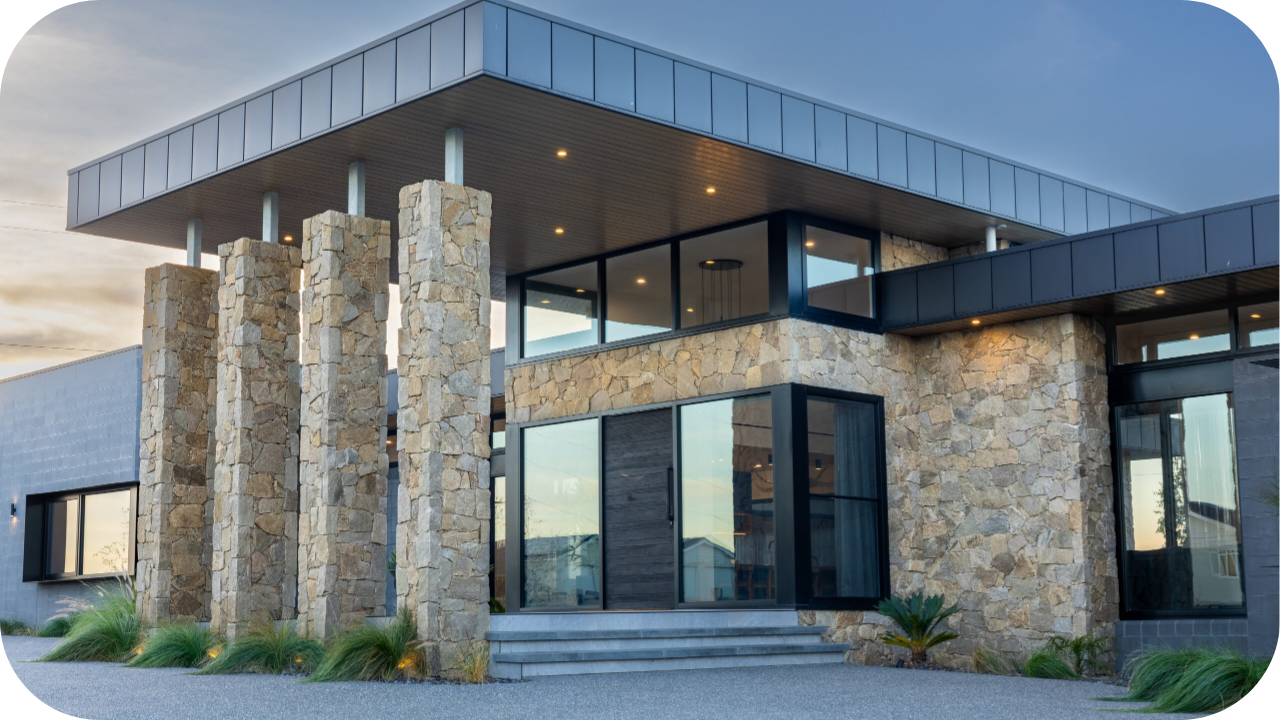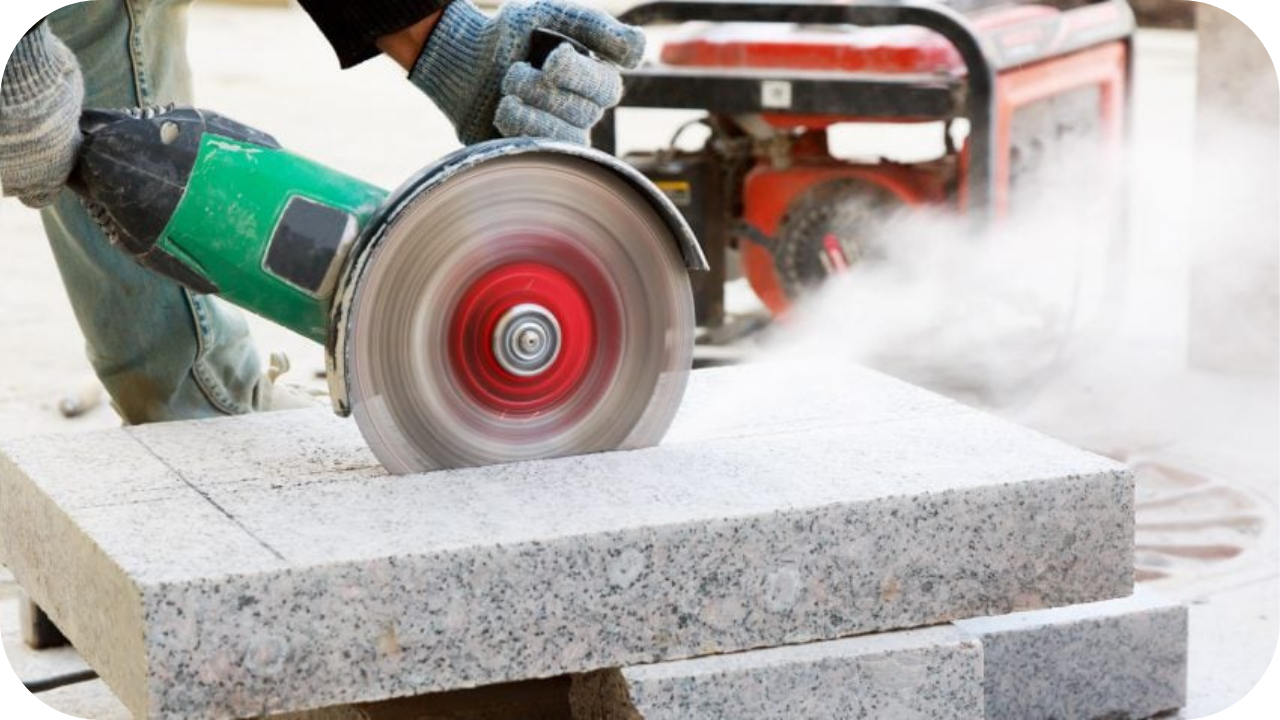
While elegant and durable, travertine flooring experiences rapid wear and tear in high-traffic areas, leading to loss of lustre and increased maintenance costs.
This constant exposure not only dulls the appearance but can also result in costly damages that are hard to reverse. Over time, the neglect of proper care can significantly diminish the value and beauty of your flooring.
Fortunately, with the right maintenance strategies, it’s possible to preserve the pristine condition of travertine floors. Our guide provides essential tips to protect your investment and keep your floors looking as good as new.
Understanding Travertine Composition
Travertine is a form of limestone deposited by mineral springs, particularly hot springs. It is characterized by its porous structure, which is formed by the escape of carbon dioxide as the stone solidifies. This unique texture contributes to its aesthetic appeal with various patterns and colours ranging from white to deep browns and impacts its durability.
The porosity of travertine makes it susceptible to staining and erosion if not properly sealed.
Additionally, travertine has natural pits and troughs, which can accumulate dirt and grime if left unprotected. This can lead to further complications such as breeding bacteria and weakening the stone’s integrity over time.
Travertine’s chemical composition primarily consists of calcium carbonate, which reacts easily with acids. This makes the flooring vulnerable to etching from common acidic substances like wine, juice, and even cleaning products not specifically formulated for natural stone.
Regular Travertine Flooring Cleaning Routine
A regular cleaning routine is essential for maintaining the integrity and appearance of travertine flooring in high-traffic areas.
- Daily Dust Mopping: Start with daily dust mopping to remove debris and minimize the grit that can scratch the surface. Use a soft, non-treated, dry dust mop and avoid vacuums with beater bars, which can damage the stone.
- Weekly Washing: Wash the flooring weekly with a pH-neutral stone cleaner to avoid the harshness of acidic or alkaline products that can etch or dull the travertine. Dilute the cleaner as the manufacturer directs and apply with a soft mop. Rinse the mop frequently in clean water to prevent re-depositing dirt onto the floor.
- Immediate Action for Spills: Immediate action is crucial for spills. Blot—do not wipe—spills with a clean, dry cloth to prevent the liquid from penetrating the stone’s pores. For stubborn stains, a poultice may be needed to draw the stain out without damaging the surface.
- Apply a Penetrating Sealer: Lastly, consider the application of a penetrating sealer at least once a year or more frequently in very high-traffic areas. This will help fill the travertine pores and provide a protective barrier against spills and stains, prolonging the life and beauty of the flooring.
Protective Travertine Flooring Measures
To protect travertine flooring in high-traffic areas, several targeted measures should be adopted to extend its lifespan and maintain its aesthetic appeal.
- Firstly, sealing the travertine is imperative. Use a high-quality impregnating sealer designed for natural stone, which penetrates the stone’s pores to provide a protective barrier against moisture and stains. This treatment should be applied annually, or more frequently in areas with very high foot traffic.
- Secondly, floor mats should be employed at all entrances and high-wear locations, such as kitchen sinks and stove areas. Mats help to trap dirt, sand, and other abrasive particles that can scratch or wear down the surface of the travertine. Choose mats with a grippy backing without rubber or latex, which can discolour the stone.
- Thirdly, utilize furniture protectors under all heavy furniture and avoid dragging objects across the floor to prevent scratches and chips. Opt for felt pads or special coasters made specifically for use on natural stone.
- Lastly, consider using rugs in strategic spots for commercial spaces or extremely busy areas to further reduce wear. Ensure these rugs are rotated regularly and cleaned to avoid dirt buildup underneath that could scratch the flooring.
Preventive Travertine Flooring Maintenance
Preventive maintenance is vital for preserving travertine flooring in high-traffic areas, ensuring it remains beautiful and functional over time.
Routine sealing is essential. Apply a quality sealant every six to twelve months, depending on the level of traffic, to protect the stone from stains and moisture penetration. This barrier protects and makes future cleaning easier and more effective.
Secondly, a strict policy should be adopted against wearing shoes on the travertine. Encourage the use of indoor shoes or flip-flops if possible. This reduces the introduction of small particles and abrasives from outdoor shoes that can scratch and wear down the surface.
Thirdly, be vigilant about cleaning spills immediately. Acidic substances like coffee, wine, and citrus juices can etch the surface if left unattended. Always blot spills promptly with a soft cloth and clean with a pH-neutral cleaner specifically formulated for natural stone.
Additionally, regular inspections for cracks or chips are important. Addressing these small damages promptly can prevent them from worsening or affecting larger areas of the flooring.
Addressing High Traffic Wear Patterns
Over time, frequent foot traffic can lead to distinct pathways where the stone has visibly dulled or become worn. To manage these effects, it is essential to periodically evaluate and rotate the layout of rugs and furniture to redistribute the wear across different parts of the flooring. This strategy helps prevent excessive wear in any single area.
Implementing area rugs and entrance mats in strategic locations can also significantly reduce direct contact and wear. Choose rugs that do not have a rubber or latex backing, which can discolor the stone, and ensure they are cleaned regularly to prevent dirt buildup.
Regular professional maintenance is recommended to rejuvenate worn areas. This can involve grinding down the surface slightly to remove the top layer of stone where most of the wear is concentrated, followed by polishing and resealing to restore the travertine’s original lustre and protective barrier.
Lastly, it’s essential to maintain consistent cleaning practices using pH-neutral cleaners to avoid further degradation of the travertine. Avoid harsh chemicals and scrubbing tools that can exacerbate wear patterns, opting instead for soft clothes or mops.
Special Considerations forTravertine Flooring on Outdoor Areas
When maintaining travertine flooring in outdoor areas, especially those with high traffic, consider the following specific measures to protect and prolong its durability and appearance:
- Enhanced Sealing: Outdoor travertine must be sealed more frequently than indoor surfaces due to exposure to weather elements. Use a sealant that offers protection against moisture and stains, and reapply it every six months or annually, depending on the level of exposure and wear.
- Weather Considerations: In regions with freezing temperatures, ensure that the sealant used is also effective against frost damage. Water can seep into pores and freeze, causing cracks and splits. Select a sealant that specifies freeze-thaw resistance.
- Regular Cleaning: Sweep outdoor travertine regularly to remove debris, leaves, and dirt that can scratch the surface. Use a mild, pH-neutral cleaner diluted in water for mopping, avoiding acidic cleaners that can etch the stone.
- Stain Prevention: Immediately clean up spills from barbecue grills, plant pots, or food to prevent permanent stains. Consider using trays under plant pots to catch excess water and prevent mineral deposits on the stone.
- Damage Inspection: Periodically check for loose tiles, cracks, or chips, especially after harsh weather conditions. Promptly address these issues to prevent further deterioration.
Long-Term Travertine Flooring Preservation Strategies
To ensure long-term preservation of travertine flooring in high-traffic areas, adopt the following strategic measures:
- Consistent Sealing: Regularly apply a high-quality sealant tailored for travertine to protect against stains and moisture penetration. Schedule sealing every 6-12 months, depending on foot traffic intensity.
- Professional Resurfacing: Engage professionals for periodic resurfacing and polishing. This process removes superficial damage, restores shine and extends the floor’s lifespan.
- Controlled Cleaning Regime: Use pH-neutral cleaners specifically designed for natural stone. Avoid harsh chemicals and abrasive scrubbing tools that can damage travertine.
- Environmental Control: Maintain stable indoor conditions; excessive changes in temperature and humidity can cause travertine to expand and contract, leading to cracks.
Conclusion: Proactive Lifespan Extension
To safeguard the elegance and durability of your travertine flooring in high traffic areas, adhering to a disciplined maintenance routine is key.
Embrace the specific cleaning practices and protective measures outlined to preserve its beauty.
Don’t hesitate—start implementing these essential tips today to ensure your travertine remains pristine and enduring.
More To Explore

Can Buffalo Granite Withstand Extreme Weather Conditions?
Australia’s climate demands more from building materials. From scorching summers to coastal salt exposure and frost-prone winters, walls need strength that lasts. Buffalo Granite is

Safety Considerations When Cutting or Drilling Beachport Quartz
Working with Beachport Quartz isn’t just about precision cuts. It also involves serious health and safety concerns that cannot be ignored. This quartz-rich stone contains


